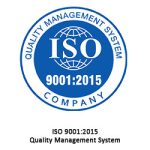As a consumer, you know how you respond to slow sites. You hit the back button or close the browser. As a business owner, you’re well aware of this. You’re a consumer, too, after all. So, you know page load time and conversion rate are related. But how exactly? How does it affect the bottom line?
Conversion rate is the ratio of visitors who take the action you want them to on a page and the total number of visitors. Examples of actions you want page visitors to take are to download a specification, fill out a form, drop a product in a shopping cart, or submit a request for quote query.
How Page Load Time Affects Your Results
You intuitively sense the longer it takes for a page to load, the more likely a visitor is to hit the back button and abandon the page. And you’re right. How fast a page loads affects how visitors experience it. And it reflects directly on how they view your company and your products and services. AB Tasty reports 40% of visitors dissatisfied with your site’s speed are likely to talk about their poor experience. In the same report, HubSpot says 80% of them are less likely to buy from you again. Because page speed is crucial to user experience, Google uses page load time in its ranking algorithms. If you want your website to be ranked in Google search results, your pages need to load fast enough.
And, yes, page speed directly influences your conversion rates.
Let’s check the statistics.
Google did a study in 2017 that showed very clear and very sobering statistics:
More than half (53%) of mobile users abandon a page if it takes more than three seconds to load.
Mobile sites that load in five seconds or fewer earn twice as much as sites that take 19 seconds to load.
Three out of four mobile sites take more than 10 seconds to load. And the average load time is 19 seconds on a 3G connection and 14 seconds on a 4G connection.
And a benchmark study by SOASTA showed 47% of all consumers shop using their phones.
Now, of course, bounce rates aren’t conversion rates.
However, visitors who bounce can’t ever convert. Your sales copy won’t even get a chance to work its magic.
It boils down to this: high page load times increase bounce rates, which directly translates to decreasing conversion rates.
But by How Much?
Walmart saw a sharp decline in conversion rates as page load time increased from one to four seconds. The graph doesn’t show conversion rate numbers, but the grid suggests conversion rates fell by about 90%.
More general figures come from an update to the Google study mentioned above. It measured the likelihood that a visitor will bounce increases with page load time.
If a page’s load time slowed from one second to three seconds, the chances of a bounce increased by almost a third (32%). And going from one to five seconds increased bounce rate by a whopping 90%!
Combining that knowledge with the fact that 53% of mobile visitors bounce at three-plus seconds, we can infer a little over 40% may bounce given a page load time of more than one second. Increasing the load time to five-plus seconds means a whopping 76% of visitors are likely to bounce.
What a difference a second makes!
How Does This Translate to Your Bottom Line?
Let’s say your sales copy works its magic and gets 20% of visitors to buy your product if speed wasn’t an issue (i.e., the page loads in less than one second).
Let’s further assume your product costs $100, and you get 1,000 unique visitors per day.
Putting everything together paints the following picture:
When speed isn’t an issue, 40% bounce, and 20% of the remaining visitors (60%) buy. That’s 120 sales and $12,000 in revenue.
When your site is just two seconds slower, 53% bounce. This leaves only 47% of visitors for your sales copy to work its magic, meaning 94 sales and $9,400 in revenue.
That’s a drop of almost a quarter!
Adding another two seconds to load your page translates to 76% bounces, meaning you make only 50 sales and $5,000 in revenue.
That’s less than half of what you’d be able to make if speed wasn’t an issue.
So, speed matters—a lot. But what can you do about it?
What to Aim for and Where to Focus
Page Load Time
Google recommends keeping page load time under three seconds.
Others recommend even shorter load times, with two seconds commonly accepted as the maximum load time mobile visitors will tolerate.
If you run an e-commerce store, you’ll want to aim for a load time of two seconds or fewer.
The Important Pages for Your Results
Pages aren’t created equal. Some are more important than others when it comes to improving load time.
Focus on the pages that move the needle for your results, also known as pages with “high consumer intent.” Basically, any page that turns a visitor into a prospect or a customer. Here are some examples of what those pages might be:
Your checkout process
Product and service information pages—especially when they have a “buy” button
Category and search pages if you run an e-commerce store
Mailing list and newsletter subscription pages
Mobile or Desktop
If you have to choose whether to focus on page speed for visitors using a desktop or their mobile phones, always pick mobile first.
A page that performs well for desktop users can be extremely slow for mobile users simply because of the slower connection. But when a page performs well for mobile users, desktop users will have an even better experience (unless you consciously include things for desktop users only and these kill load speed).
Steps to Improve Page Load Times
As with anything you want to improve, you need to start with where you are. Without that, you won’t know whether your changes make things better or worse.
So, the first step is to measure how fast your high-consumer-intent pages are loading.
I highly recommend using a tool to do so, because they’re more accurate and more efficient. You can use Google PageSpeed Insights or a more sophisticated performance measurement tool like SolarWinds® Pingdom®.
The second step is to start optimizing for speed.
This means minimizing the number and size of files needed for a page to display in a browser. You may also want to minimize the “network distance” between your site’s resources and visitors by using a content delivery network (CDN).
To learn more about what affects page load time and what you can do to minimize it, check out our article on page speed and SEO.
The third step is to check your results and ensure there’s an improvement.
After that, you want to repeat measurements regularly, so you can act fast when something causes one or more pages to slow down.
Break the Speed Limit
Speed matters.
You’ve seen exactly how page load times affect conversion rates and know when it comes to your business’s bottom line, every second counts.
So, start measuring and start improving. Break the speed limit holding you back. And keep measuring to know when things slow down, so you can diagnose what’s causing it and act fast to remedy it.
And be sure to check out a free trial of SolarWinds Pingdom and experience how it helps you measure, analyze, and improve your page speed.
This post was written by Marjan Venema. With 30+ years in all corners of software development, Marjan’s specialty is writing engaging copy that takes the terror out of tech: making complicated and complex topics easy to understand and consume.

Design Focused versus Enterprise Design
95% of business websites fail, causing a re-design cycle of 18-30 Months*. Businesses tend to focus only on design and are left wondering why each




















